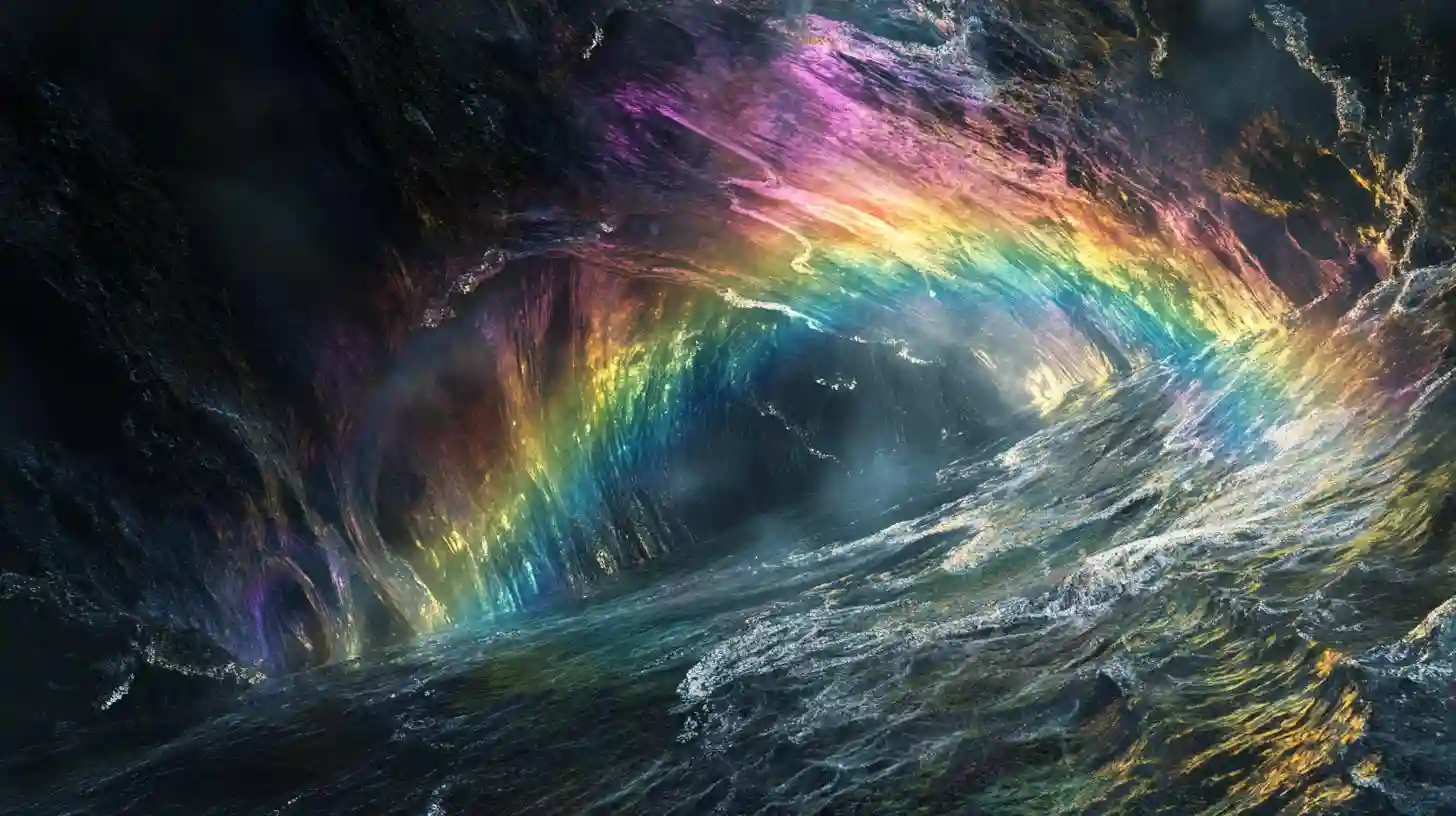
Thoughtvaultzone

Rainbows are one of nature's most captivating spectacles, often intriguing both children and adults alike with their vivid colors and arched forms. Their formation is tied to a complex interplay of sunlight and water droplets in the atmosphere, often occurring after a rainstorm when the sun breaks through the clouds. To understand why rainbows appear under such circumstances, it's essential to delve into the science behind their creation.
The process starts with sunlight, which is composed of light waves of different wavelengths, each corresponding to a different color. When light travels through the atmosphere, it can encounter particles and droplets of water. After a rainstorm, the air is typically filled with moisture in the form of tiny water droplets suspended in the sky. When sunlight enters one of these droplets, a fascinating dance of refraction, dispersion, and reflection occurs.
Refraction is the bending of light as it passes from one medium to another—in this case, from the air into the water droplet. As the light enters the droplet, it slows down and bends at an angle. This bending effect differs according to the wavelength of the light; shorter wavelengths, like blue and violet, bend more than longer wavelengths like red and orange. This characteristic leads to the dispersion of light into its component colors.
Once the light has been refracted upon entering the droplet, it travels through the droplet and eventually hits the back surface of the droplet. Here, reflection occurs, causing the light to bounce back towards the front of the droplet. This internal reflection is crucial as it redirects the light toward the observer's eye when it exits the droplet.
As the light exits the droplet, it refracts again, bending a second time as it transitions back into the air. This final bending further separates the colors, allowing them to fan out and form a circular arc of colors that we recognize as a rainbow. The specific placement of colors in a rainbow follows a consistent order due to the varying degrees of refraction experienced by each color; red appears on the outer edge, followed by orange, yellow, green, blue, indigo, and violet on the inner edge.
The observer's position is also critical in the creation of a visible rainbow. To see a rainbow, you must be facing the opposite direction of the sunlight. This configuration ensures that the light reflected off the back of the droplets in the rain is directed toward your eyes. Rainbows are typically seen in the early morning or late afternoon when the sun is lower in the sky, allowing the light to create that enchanting arc above the horizon.
Additionally, the presence of numerous water droplets is essential. A single droplet can produce a spectrum of colors, but only in a minute, scattered way. To see a rainbow in its full, vibrant form, countless droplets must be present, each contributing to the overall impact of the arc. This is why rainbows are often observed in areas with consistent mist or after a rain shower, where millions of droplets are lingering in the air.
Interestingly, rainbows are not confined to just one type. When conditions allow, you may also witness double rainbows, which occur when light is reflected within the droplet twice before exiting. In this case, the outer rainbow will have its colors reversed compared to the inner rainbow, creating a stunning visual effect in the sky. Rarely, other phenomena such as supernumerary rainbows, which consist of closely spaced, fainter bands, can also occur due to wave interference patterns of light.
Beyond their aesthetic beauty, rainbows carry cultural and symbolic significance in various societies. They are often associated with hope and peace, serving as a metaphorical bridge between realms. In many myths and legends, rainbows are seen as pathways that connect the earthly and the divine, showcasing humanity's enduring fascination with these natural wonders.
As we marvel at the beauty of rainbows, it becomes clear that their formation is rooted in fundamental principles of optics. Understanding the science behind their creation not only enriches our appreciation for these vibrant arcs of color but also provides a glimpse into the intricate workings of our atmosphere. The dance of light, water, and the interplay of angles create a fleeting moment that, while ephemeral, leaves a lasting impression on those who take the time to witness it. The next time you spot a rainbow illuminating the sky after a rainstorm, remember that it is the result of an elegant convergence of natural forces, producing a visual display that is both scientifically fascinating and profoundly beautiful.